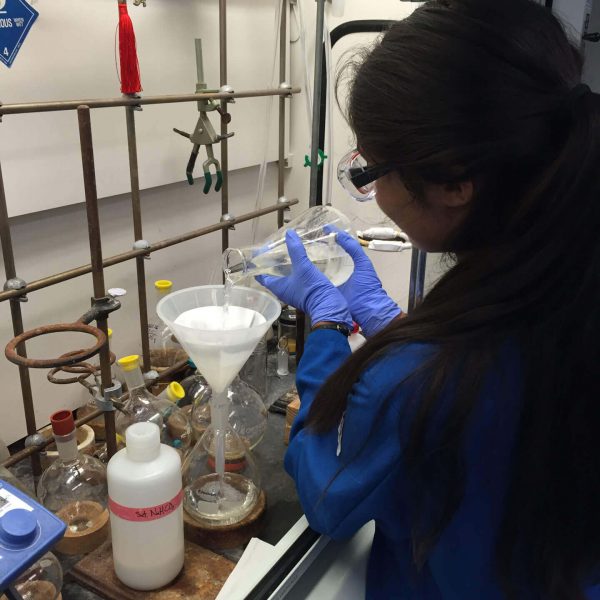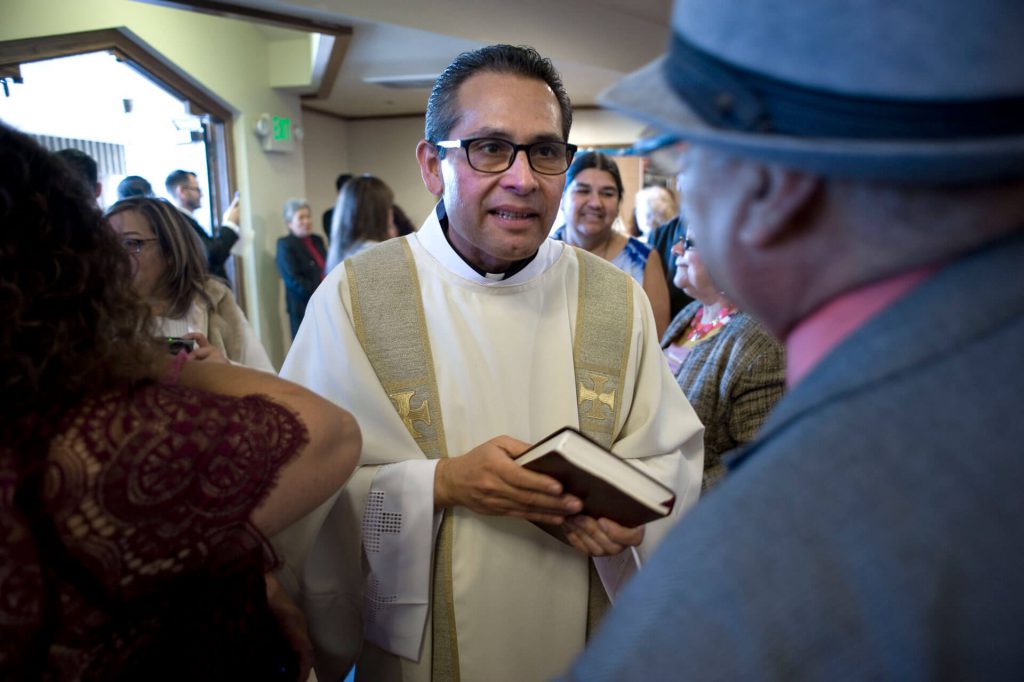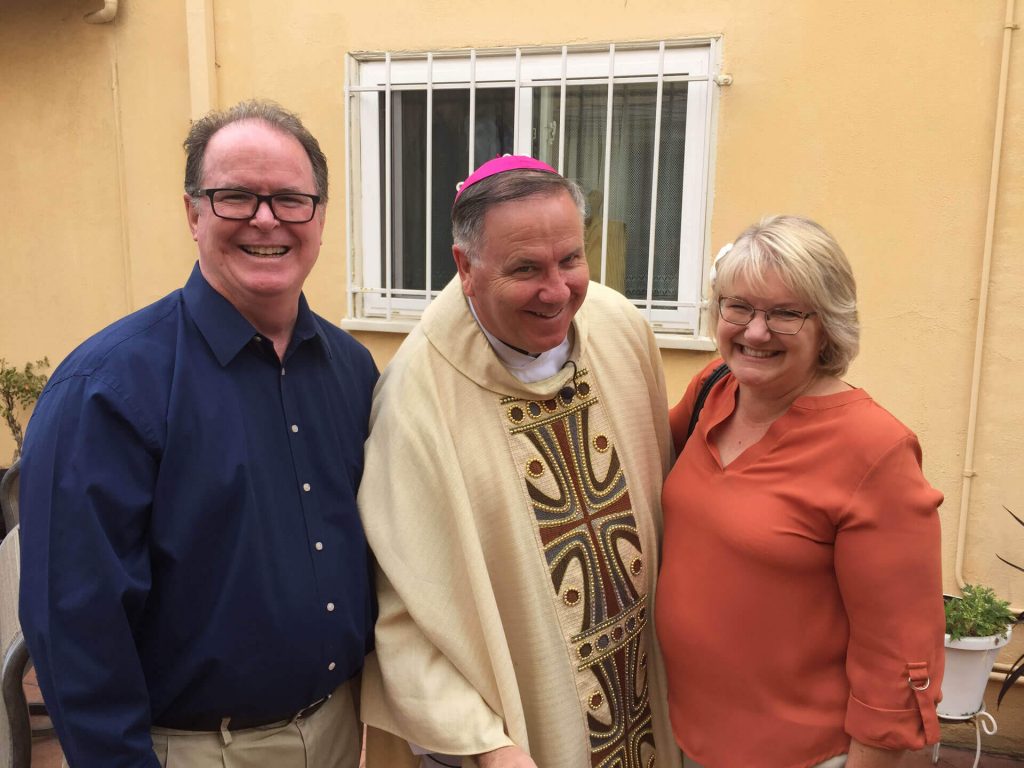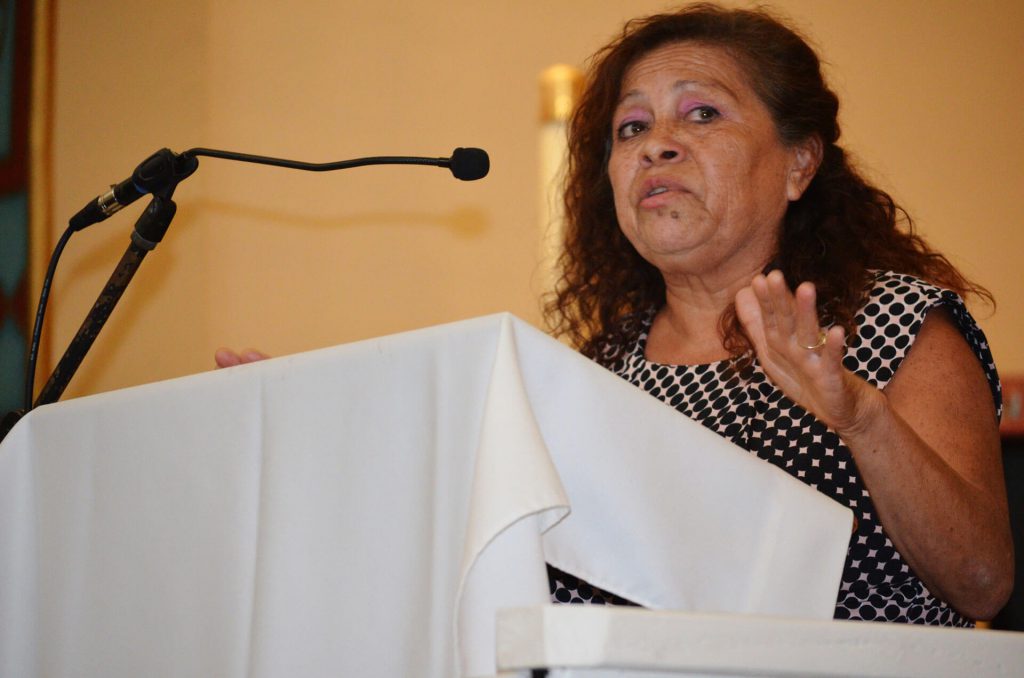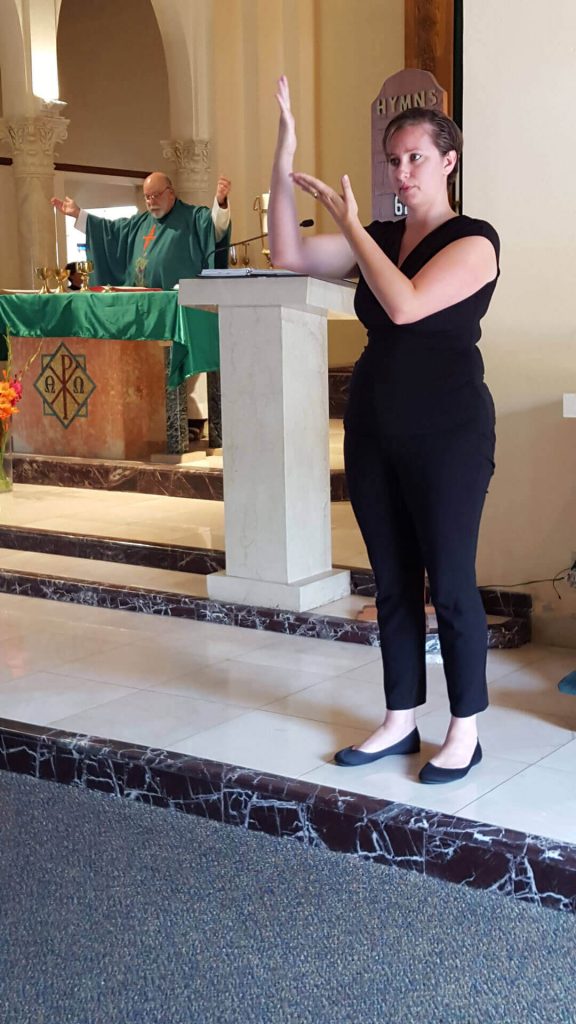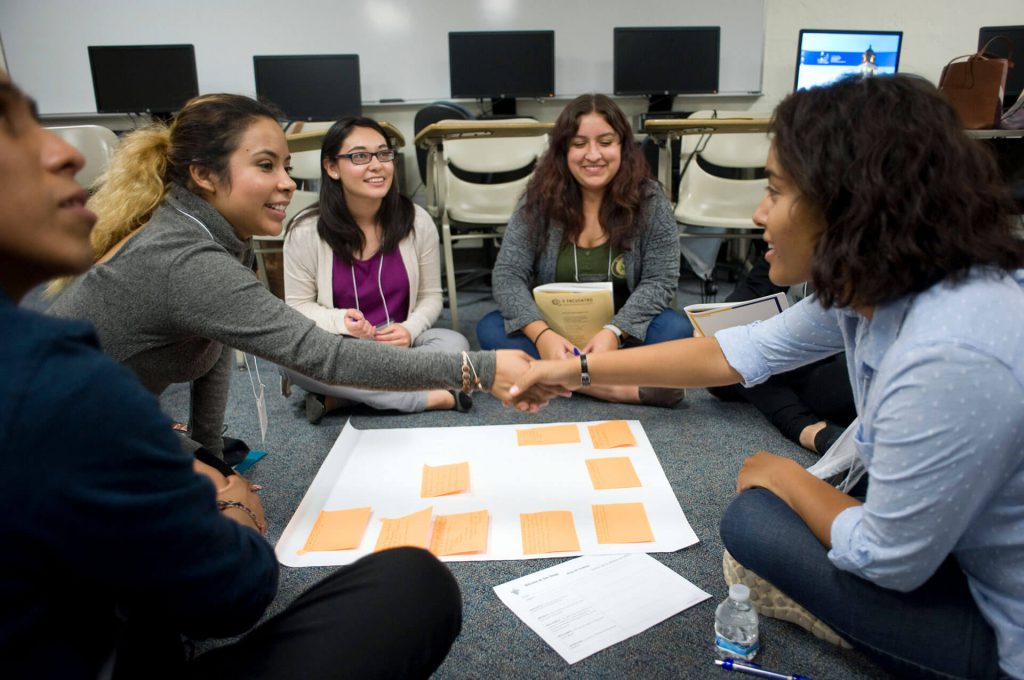CHULA VISTA – If you go to a pep rally at Chula Vista’s Mater Dei Catholic High School, you may be in for a surprise. That boisterous crowd celebrating Mater Dei’s latest victory is just as likely to be celebrating a big win in a science competition as it is to have conquered its latest opponent on the basketball court or the football field.
Welcome to the Mater Dei Academy of Science, one of the outstanding academic programs supported by the Diocese of San Diego and one of the great reasons to celebrate Catholic Schools Week, Jan. 28 – Feb. 3. That’s when schools across the diocese welcome parents who want to explore a Catholic education for their children with open houses and other activities. The theme of this year’s week is “Catholic Schools: Learn. Serve. Lead. Succeed.”
The diocese has three schools that offer a specialized curriculum — the Juan Diego Academy (on the Mater Dei campus) and Our Lady’s School have dual language immersion programs. At Mater Dei’s academy, however, there’s no question what subject is king.
“Science is a big deal here,” said Dr. Suzanne Till, director of the Academy of Science, a component of Mater Dei Catholic High School. “More than a quarter of our student body participates and the ‘science kids’ here are treated the same way other schools treat their star athletes.”
When Till was hired in 2012, the Academy of Science had just 30 students. Today, it has 220 and climbing.
“Science is cool at our campus,” said Till, talking about the number of student athletes who also participate in the Academy of Science. “I like to remind our students that they could be the generation that explores Mars, so they need to be physically ready to handle the rigors of space travel.”
Students who participate in the Academy of Science don’t just learn from textbooks and laboratories; at its heart, the program is about “work-based learning.” In other words, students spend time outside of the classroom, in the field, not just studying science, but doing science.
“Students study biomedical science, environmental chemistry, big data science, nanotechnology and other disciplines by working with our partners in San Diego’s STEAM community and experiencing science in action,” explained Till.
The curriculum at the Academy of Science follows the concept of STEAM (Science, Technology, Engineering, Arts and Mathematics). Partners include the University of San Diego; the University of California, San Diego; San Diego State University; the Hubbs-Sea World Research Institute; the Living Coast Discovery Center; the National Weather Service; the Old Globe Theatre; the Metropolitan Water District of Southern California; and many more. Student coursework includes:
• Seabass in the Classroom, in conjunction with the Hubbs-Sea World Research Institute and the California Department of Fish and Wildlife. Students study the biology of the Pacific White Seabass, along with ocean chemistry and modern aquaculture. They raise fish from hatchlings in a 120-gallon seawater fish tank with the goal of releasing juvenile seabass in the ocean off La Jolla Shores. Students must closely track water quality, feeding rates, aquaculture power requirements, and keep proper records to maintain their permit to release fish into the wild.
• Aviation Careers Education Camp, where students interact with professionals and aviation technology from the U.S. Navy, the U.S. Coast Guard, and the Federal Aviation Administration. The camp ends with flight time for each student.
• Environmental Science Camp with USD, studying invasive species in San Diego Bay.
• Ethnobotany/Pharmacy Camp with the UCSD School of Pharmacy, designed to make chemistry fun, useful and approachable.
• SDSU Big Data Hackathon: In 2017, the Academy of Science sent the only high school student teams, and won two of the six awards – Third Place Overall and Most Innovative Proposal.
Science can also show up in unexpected places. After viewing rockets flying in the musical “October Sky,” students received technical notes from the Old Globe Theatre explaining the engineering behind launching rockets inside a theatre.
Sergio Cuadra, Mater Dei Catholic’s 2017 Valedictorian, credits the Academy of Science with giving him the training and skills that resulted in his acceptance by MIT.
“Your test scores have to be good,” said Cuadra, who was given a full scholarship by MIT, “but [schools] want to see you have experience. They like to see you’ve done actual science as much as they like to see good grades.”
Till credits the success of the Academy to a number of factors, but especially to the fact that the program is open to any student willing to put in the work.
“The program is merit-based. We teach students to be responsible. We do everything we can to be supportive.” Maybe they weren’t great students when they got here, she said, “but they might be a superstar by the time they leave.”
Till also points to the diversity of the Academy of Science as a crucial element in its success, pointing to fact that a majority of the students are female (52 percent) and that the racial and ethnic makeup of the campus very much reflects the community.
Something must be going right. The growth of the Academy of Science is matched by its success. The “washout rate” of students leaving the program for academic reasons last academic year was less than 1.5 percent. Only three students out of 220 failed to maintain the academic requirements to stay in the program.
“Not everyone goes through the program intending to have a science-based career,” said Till, “but everyone who graduates from the program will be literate in science and able to apply those lessons to their everyday life.”


